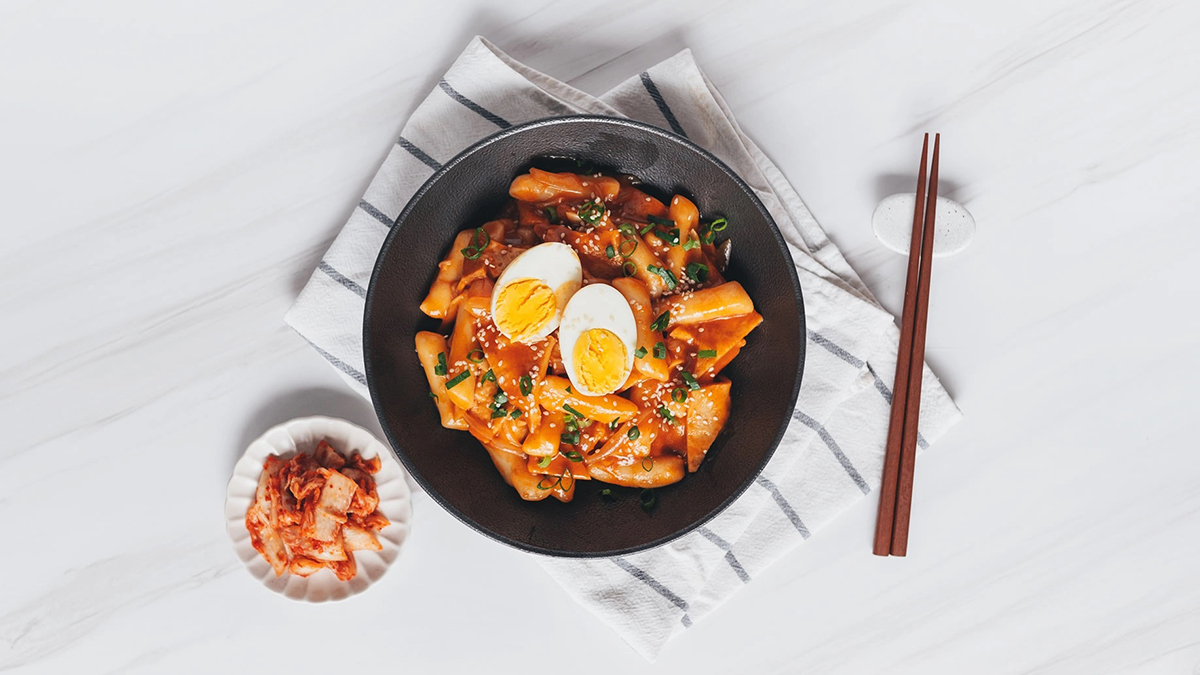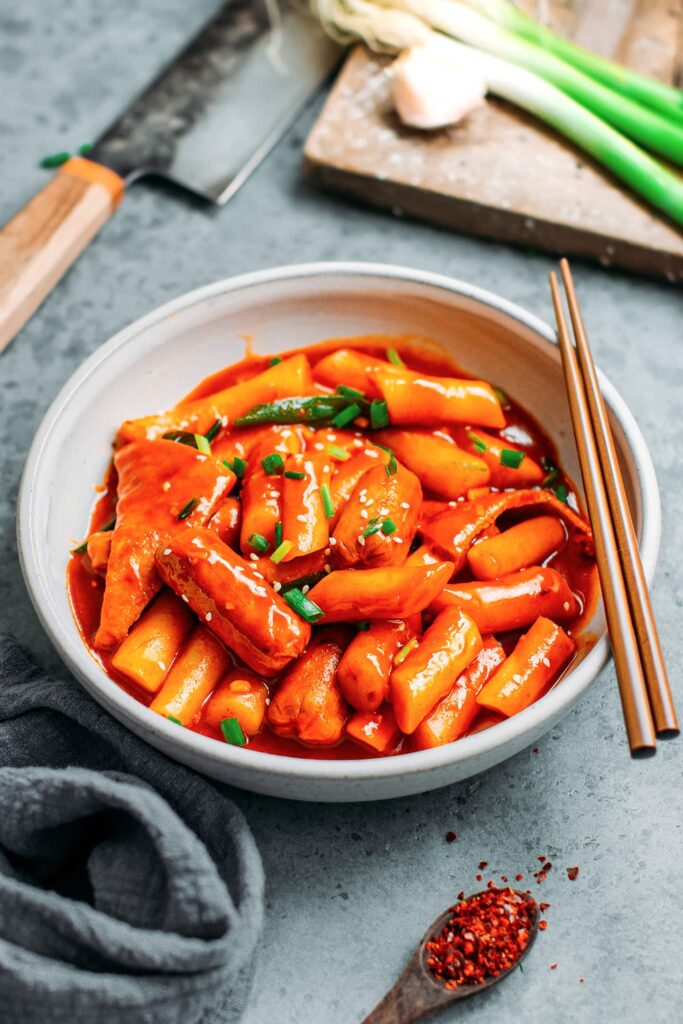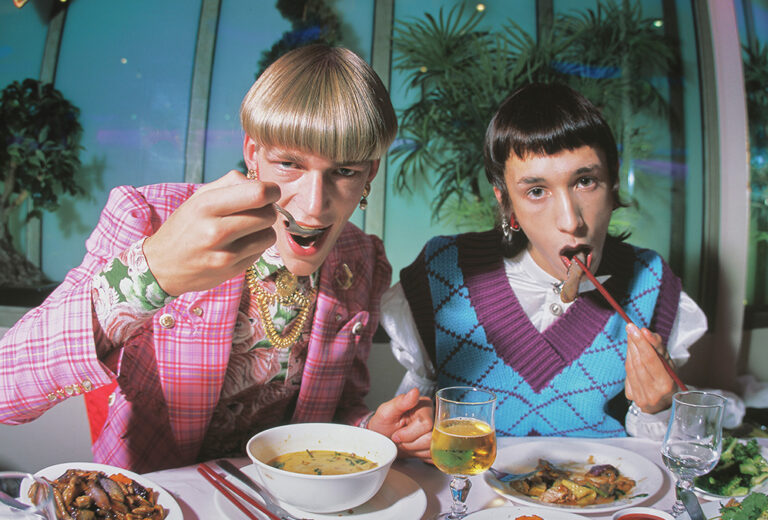Click here to read the Spanish version.
This street food dish is influencing current gastronomic trends, having become a phenomenon in the United States that has led to an increase in demand both online and in various restaurants that offer variants of tteokbokki.
Tteokbokki has gone from being a delicacy served in the royal courts of Korea’s Joseon period to an urban snack or staple food served by ponangmacha (vendors) on the streets of Seoul. From there, it went on to rise to prominence in the rest of the world, thanks in large part to the confluence of Korean popular culture.
This culinary creation consists of a combination of ingredients: tteok, a type of Korean paste made from glutinous rice in a tubular shape, which is usually mixed with soup, Korean fish cake (eomuk), eggs, meat or boiled vegetables with sweet and sour gochujang or gochugaru chili powder, forming a collision of sweet, salty and spicy notes.
THE K-FOOD PHENOMENON
The South Korean influence on Western culture, as a global phenomenon that crosses from fashion to music with K-pop or gastronomy through the K-food trend, even receives the term “hallyu” to refer to this enormous growth of global interest in Korea. An emerging trend that is dominating the world, and that is making dishes like tteokbokki glorified on the other side of the world.
That influx is what is now causing countless versions of this dish to flourish, which are being sold both online and in restaurants specializing in tteokbokki. Likewise, the fact that BTS singer Jimin shared a video of himself eating this spicy dish in a Seoul market made it go viral across the screen.
Such is the effect of tteokbokki around the world that Korean food producers such as O’Food began selling instant tteokbokki in the United States in October 2021, and to date have increased their sales by 450% over the past year. Beyond that specific case, a report by “The Hankyoreh” noted that the Korean Customs Service put tteokbokki exports at no less than $54 million.
Korean food has thus gained countless followers in recent years among dishes such as Kimchi, Banchan or Bibimbap, due to the rise of its culture to the universal epicenter that leads us to desire all those Asian creations immersed in the K-Food trend.






